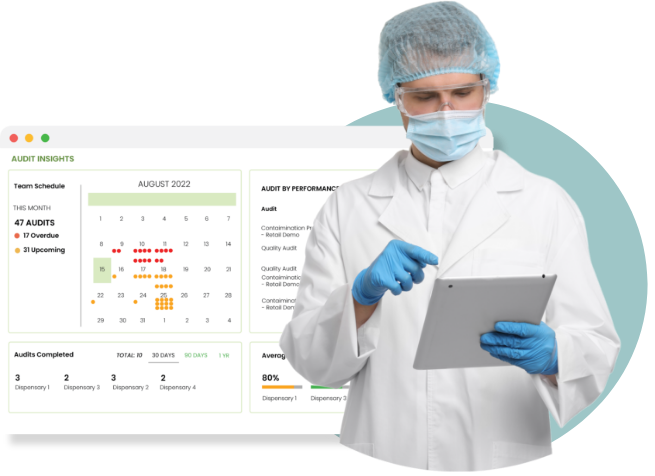Author: Ben Hartman | October 30, 2024 | 4 Min Read
Could This Company Put Food Safety in the Palm of Your Hand?

In September, the results of a new Gallup poll made it abundantly clear - consumers have lost faith in the safety of the food they eat.
According to the poll, 42% of adults surveyed said they have either no confidence or little confidence in the safety of the food supply in the U.S. and 53% have avoided buying certain brands or types of food because of a recall or a food safety advisory.
But what if food manufacturers had detection tools at their disposal at all times? What if they had a much quicker, easier way to know what’s safe and what needs to be discarded?
Last week, Rootwurks spoke to Nathan Newman, the founder of Paramagnetix, a tech company that has developed a portable chemical diagnostic device called the PX1 that it says allows food producers, retailers, and consumers to monitor the safety, freshness, and shelf life of food in real-time, without needing outside lab work.
The handheld device can identify the presence of allergens in foodstuff people eat “at restaurants, schools, campus dining halls, and while vacationing.” The company said it can also help companies predict the shelf life of food, helping cut down on food waste.
“I would build my own”
According to the company, the PX1 uses magnetic resonance technology which detects the presence of chemical reactions to identify allergens, pathogens, and other harmful substances. Newman said that the critical elements that enabled the PX1 to be developed came from a two-person team that included him and Saraansh Saxena, the company’s VP of Product Development.
The company describes the device as “the first portable, magnetic resonance technology-based diagnostic device to rapidly monitor the quality, freshness, and safety of the food we eat.”
Newman, a former Arizona State University professor who has authored hundreds of technical papers, told Rootwurks that the impetus for founding the company was the fact that commercial magnetic resonance machines can cost a million dollars or more and can take years of training to operate.
“I always did experiments and when commercial instruments could not do the required task, I would build my own.”
Newman said the Paramagnetix PX1 device “is able to detect harmful chemicals down to parts-per-million- the trace levels that are known to cause harm” Newman added that each test will cost less than $10 and have a reliability of > 98% accuracy against false negatives and false positives. Currently, such performance can only be achieved in a chemical lab setting and this does not always work well with the fast-paced nature of the food industry.
You Need to Have a Spot Test
“You can send it [samples] out to a lab and spend hundreds or maybe thousands of dollars each month and wait three days for results. But if you’re a food producer, what do you do with the food you've produced in three days? You really need to have a spot test,” Newman said.
Newman said that the tests are as accurate as an ELISA (enzyme-linked immunosorbent assay) test which is used to detect hormones, antibodies, and proteins in bodily fluids - while also being as affordable and convenient as lateral flow tests.
That said, Newman made sure to note that the PX1 device isn’t meant to replace lab testing outright, rather, it's meant to give food industry workers a device that they can use themselves to perform food-safety tests anywhere and anytime.
You can’t touch, taste, or smell the threat
Newman said that part of the need for such a device is simply that often detecting allergens or contaminants is not something that is possible with just the naked eye.
“You can’t tell with touch, taste, or smell - you have to do a chemical test.”
In the case of allergens, Newman used the example of a company that produces trail mix and wants to clear the line to produce a nut-free, allergen-free mix. The company first cleans the equipment as well as possible and then uses swabs to collect samples from the equipment and test it on the spot with the PX1. When testing for listeria or other pathogens, the test can take around 20-30 minutes, Newman noted.
But beyond the device's detection capabilities, there is also simply the ease of operation.
“The magnetic resonant device we replaced weighed 2000 pounds and cost a million dollars. Our PX1 weighs well under a pound.” He added that operating the device requires no technical or scientific background and is as easy as using a mobile app.
Newman also said he sees use for the device in traceability.
“You can start with the products you’ve already shipped, you can check what’s in house and you can also go back to the field and check what’s coming off the line. It’s a great spot check, especially when you’ve got a potential recall in the works and don’t have time to wait three days for lab tests to return.”
Newman said he sees the device as potentially transforming food safety for food producers and restaurants. “If this was in every facility, if people had easy access to it, things could be very quickly sorted out and traced and have a major impact.”
It is also reason enough to leave academia, at least for Newman. “I would love to have this kind of impact, that’s why I left the university, to do this.”
Contributors

Ben Hartman
From HACCP certification to the basics of hygiene, our on-demand courseware has you covered.





.jpg?width=120&height=80&name=Baby%20(1).jpg)

